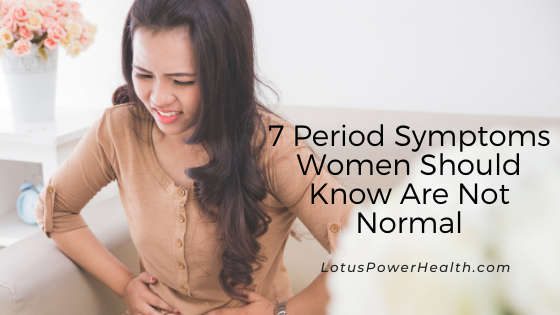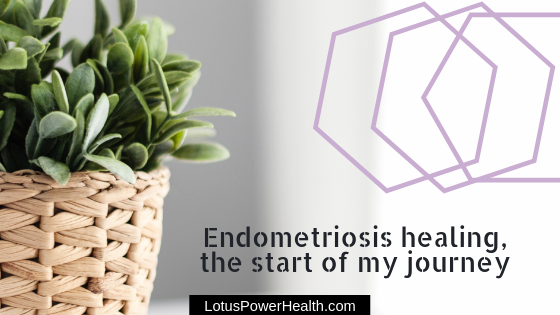It’s hard to talk about our period as women, as that’s a topic considered taboo – but discussing problems about feminine health is the first step to understanding your body better and making sure that you’re completely healthy. For instance, many women actually don’t completely understand the difference between a normal period symptom and a symptom that is abnormal, or even a sign of a serious medical issue.
When our bodies operate outside of the norm, it can be embarrassing to discuss these issues – even with medical health professionals. The time for silence ends now… especially if you’re exhibiting any of the following 7 symptoms. These period side effects should be brought up to your OBGYN or general physician ASAP.
Here are 7 Period Symptoms Women Should Know Are Not Normal:
Period Symptom #1: Extremely Heavy Bleeding
You’ve probably heard that the blood you emit while on your period is about the equivalent of a tablespoon or two – even if it covers your pad or tampon, it’s not a lot of blood so there’s no cause for alarm. For some women this is indeed the case. Others, however, have extremely heavy flow.
There’s a significant difference between a heavy flow and extremely heavy bleeding while on your period. If you use more than five pads or tampons a day and they’re thick with blood, it’s important to talk to your OBGYN about potential hormonal imbalances and health concerns.
Period Symptom #2: Intense Cramping
Even if many women experience menstrual cramps while on their period, it’s definitely not normal. If you’re experiencing extremely painful and shooting sensations in your pelvic area while on your period, you should really not ignore those. This kind of pain should be addressed with a medical professional as soon as possible so they can rule out more severe causes.
Period Symptom #3: Spotting
Not every woman’s period is regular, and this can sometimes cause confusion among women about how regular their periods should be. Consider that a good cycle is between 28 and 32 days. Less, or more than that, and you should get your hormones checks. While spotting while not on your scheduled period can be nothing, it can also be a serious sign that something isn’t right. So get this checked out.
Period Symptom #4: Large Blood Clots
Your menstrual blood should flow easily, and yet some women think that the presence of large clots during their period is normal. This isn’t the case – while some clotting may occur, especially overnight during a cycle, large clots aren’t part of the average period. These clots can also get stuck inside the uterine opening, causing clogs and other serious illnesses. You may have fibroids if clots larger than a quarter persist.
Period Symptom #5: Severe Lower Back Pain
Back aches during periods isn’t anything outrageous, but the more severe the pain? The more unusual the symptom. This sort of pain, accompanied with pain in other regions of the pelvis, can signal a variety of health problems, like endometriosis, cysts or fibroids.
Period Symptom #6: Painful bowel movements
There can be a lot of reasons for having severe and painful bowel movements, and many of these are unrelated to your cycle. If these occur frequently or only during your period, however, you might have endometriosis. It’s not unusual to have some pain during bowel movements while on your period, but severe pain could be your uterine lining growing onto your appendix or bowels.
Period Symptom #7: Any Major Changes In Your Symptoms
In general, keep in mind two rules of thumb. One: know the difference between average and severe symptoms. Two: any change is a change to report. When your period symptoms make a sudden drastic change, speak to your doctor about the new or worsened symptoms.
“No symptom is normal. It’s a sign that something is wrong.” – Dr. Reed Davis
Questions to you
Have you always considered that having pain on your periods was normal, and there was nothing you could do? Do you have other symptoms that are not mentioned above?
Share below!
FREE 10-Day Optimised Health & Wellness Challenge
Discover the 5 steps of The Optimised Health Formula and how you can apply them to your life.




